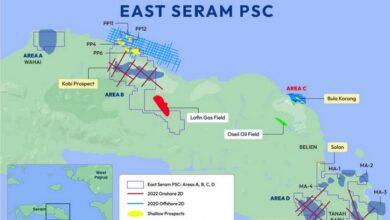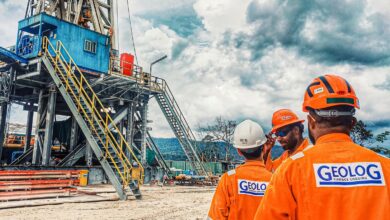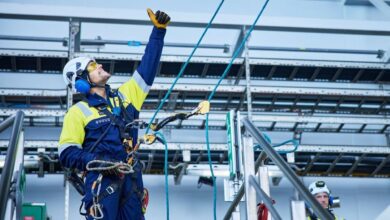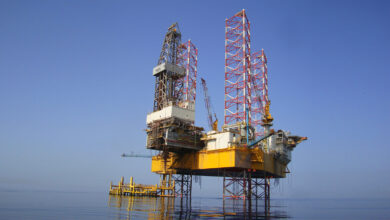BSEE reports record average daily oil production from Gulf of Mexico in 2019
The US Bureau of Safety and Environmental Enforcement (BSEE) announced that, for the first time, oil production from the Gulf of Mexico exceeded 2 million barrels per day (BPD) in August 2019. This record average daily production in the Gulf of Mexico followed on the heels of a record-setting 2018 for the entire Outer Continental Shelf (OCS), when a total of more than 640 million bbl were produced in federal waters.
The increase in production in 2019 led to $2.34 billion more offshore royalty revenue for the Federal Treasury and, according to a US Energy Information Administration report, US Gulf of Mexico oil production not only increased but will continue to set records through 2020.
“This is incredible news for the nation,” Scott Angelle, BSEE Director, said. “Under the Trump Administration, BSEE is stressing safety and environmental sustainability while at the same time promoting robust energy production offshore, and it’s paying off.”
BSEE implemented initiatives beginning in 2017 to improve its performance in response to three of President Donald Trump’s Executive Orders: 13795, 13868 and 13783. These efforts have targeted all three of BSEE’s mission areas: safety, environmental sustainability and resource conservation.
BSEE has made advancements in ensuring resource conservation. Recognizing that collaboration with industry spurs innovation, BSEE formed a strike team to better manage high-pressure, high-temperature (HPHT) operating conditions. The significant efforts of this team led to clear directives being published in three 2019 Notices to Lessees, which set a path for HPHT projects in the Gulf of Mexico to gain BSEE approval.
Shell’s Appomattox project, located in the Gulf of Mexico about 80 miles south of New Orleans, was the first high-temperature project to gain BSEE approval and begin production in May 2019. The permitting work for the Appomattox project helped define and clarify the safety requirements in BSEE’s recently published HPHT related guidance documents.
On 12 December 2019, Chevron sanctioned the first ultra-high-pressure project at Anchor in the Gulf of Mexico approximately 140 miles off the coast of Louisiana. The project represents the industry’s first deepwater high-pressure development at 20,000 psi to win a final investment decision. The BSEE strike team met with Chevron to discuss the guidance.
Chevron subsequently awarded Schlumberger OneSubsea a contract to provide the industry’s first fully integrated subsea production-rated system to handle up to 20,000 psi. Chevron relied upon BSEE’s safety requirements to incorporate the guidance into its operations. Defining the processes, procedure and standards has ensured additional energy resources are not abandoned unnecessarily.
BSEE also partnered with the Bureau of Ocean Energy Management to conduct research into the health of energy production in the Gulf of Mexico Shallow Water Province. That research is detailed in a joint research report, “Gulf of Mexico Data and Analysis/ Leasing, Drilling and Production, Gulf of Mexico Shallow Water Potential Stranded Assets,” which evaluates the contributing factors for the decline in shallow water production and recommends operators use updated considerations in their royalty relief applications.
Ongoing BSEE initiatives are driving safety performance and environmental stewardship improvements, including:
- Risk-based Inspection Protocol: Using data and trend analysis to identify higher-risk operations and facilities, BSEE is able to focus inspection resources on these targets as a supplement to BSEE’s existing schedule of inspections on production facilities and active drilling operations. This systematic approach led to performance-based risk inspections on 67 facilities in 2018, resulting in two safety alerts issued and 19 safety recommendations. In 2019, BSEE conducted performance-based risk inspection on 57 facilities, resulting in two safety alerts issued and 20 safety recommendations. BSEE also conducted three facility-based risk inspections in 2018 and four in 2019;
- Risk Analysis Committee: Established in December 2018, the Risk Analysis Committee advances BSEE’s policy to ensure that risks to human health and the environment related to offshore activities are properly identified and reduced. This formalized effort addresses gaps identified in a 2011 report produced by a National Commission on the BP Deepwater Horizon Oil Spill and Offshoring Drilling;
- Vital Statistics Program: Led by BSEE subject matter experts, vital statistics teams measure and track more than 80 unique statistics in order to identify areas needing improvement. Committees review quarterly data and meet to discuss findings from their analysis, and then recommend action steps;
- Text Messaging Service: The “BSEE!Safe” messaging service, launched in May 2019, is a first-of-its-kind direct communication between a safety regulator and front-line workers. BSEE has used the service to send 28 safety alerts and bulletins to offshore workers, via more than 51,470 text messages, sharing lessons learned and recommendations from incidents and near misses. BSEE is currently the only safety regulator in the world that delivers critical safety information directly to several thousand workers through text messaging;
- Regulatory Reform Effort: As directed by Executive and Secretarial orders, BSEE undertook a review of the “Production Safety Systems Rule” and the “Well Control Rule” with a view toward the policy direction of reducing regulatory burden without sacrificing safety. The resulting revised rules provide an undiscounted 10-year savings of $1.67 billion dollars compared with a cost of $3.2 trillion for the rules promulgated in 2016. BSEE believes in smart regulations that lead to risk reduction without unnecessarily encumbering energy production, constraining economic growth or preventing job creation; and
- Information Sharing: BSEE has worked to enhance safety by increasing information sharing between the Bureau and the industry. The number of Safety Alerts and Safety Bulletins issued by BSEE rose 214% from 2016 to 2018, demonstrating BSEE’s commitment to proactively analyzing information and sharing knowledge to reduce risk. The current administration also energized efforts to increase participation in the voluntary near-miss reporting program known as “SafeOCS”. Through dedicated outreach, participation has grown from the inherited rate of 4% to 86% as of June 2019, a 2,766% increase.
“We changed our compass bearing at BSEE, driving safety performance and environmental stewardship improvements beyond regulations through innovation and collaboration beginning in 2017,” Mr Angelle said. “There has been a tremendous amount of planning and action. We will continue to improve our processes to ensure we achieve our nation’s goals of energy, economic, and national security without sacrificing safety.”
Internally, Mr Angelle challenged BSEE to develop initiatives that made BSEE more efficient. Over the past two years, BSEE decreased staff by 11.6%, reduced budgetary expenditures by 7.4% and increased mission critical occupations from 45-47%.
“We have developed a culture of continuous improvement, employing a systematic approach that engages all BSEE employees in developing best practices,” Mr Angelle said. “With an understanding that a strong and safe domestic energy industry is good for America’s energy, economic, and national security, the Trump Administration is focused on making changes, not excuses.”




